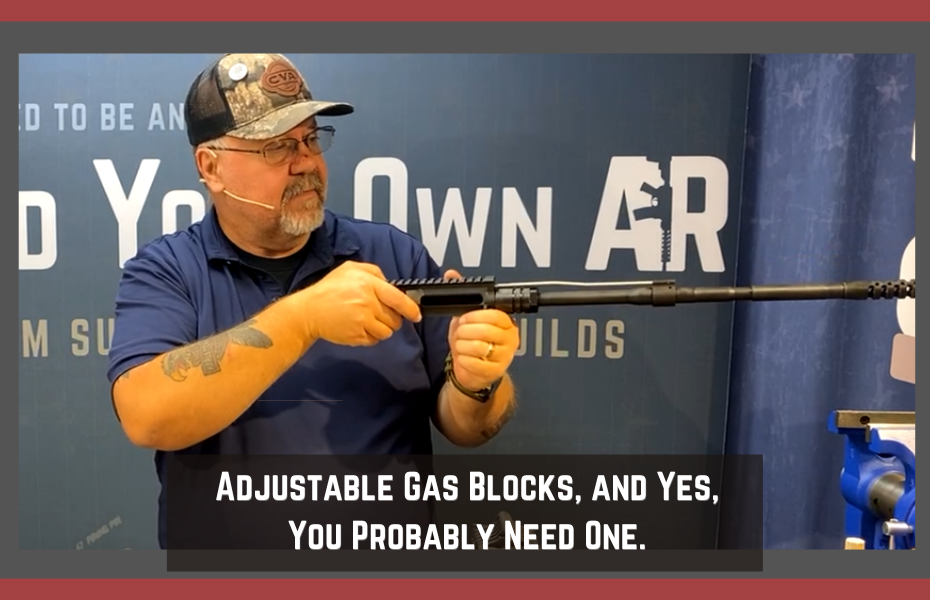So you need an adjustable gas block, but why?
AR-platform rifles work by using extra gas from the firing of the bullet to cycle the rifle. Gas travels out the gas port, through the gas block, down the gas tube, and pushes the bolt Carrier group backward. This ejects the spent round and the spring and buffer in the stock push the bolt carrier group forward and load the next round.
Most AR manufacturers make their rifles with a slightly oversized port.
This causes an over-gassing issue. They do this so that the rifle performs reliably with different ammo under a variety of conditions. The problems are exacerbated when you start to customize your rifle with muzzle brakes or suppressors. This adds more backpressure giving you even more of an over-gassing issue. So why is that a bad thing? Over-gassing leads to heavier than necessary recoil, dirtier internals, and premature wear, and failure of parts.
Adjustable gas blocks let you tune your gas system to any setup.
Just got a suppressor, trying your hand at reloading your own ammo, or bought an adjustable muzzle brake? Then you’re going to want an adjustable gas block to pair with it. There is a dizzying array of options out there from roughly $30 to over $100. But why complicate things? You are either trying to retard or advance your system, period. A simple shut-off screw with a lockdown will work fine and is not super difficult to optimize and tune.
We want the rifle to perform but not over-perform.
So I close the gas block all the way and then open it one half of one turn, and lock the screw in place. Then I install my gas block per the manufacturer’s recommendations and am ready to test fire. 1 round gets loaded in the magazine and then I load the rifle. I fire said round and see the results. Did my round eject? Did my bolt hold open on the bolt catch? If my answer to either is no, I want to open the gas system a bit more. I now go one-quarter of one turn at a time and repeat the one bullet process. I do this until I can answer both questions yes. My spent round ejected and my bolt held open on the bolt catch.
Once the rifle is both ejecting and the bolt is staying open now it’s time to fine-tune it.
Start by closing the screw 1/32 of one turn until I have a no answer to my questions and then go back one step to where I answered them yes. This system relieves stress on your internal components, keeps the bolt from slamming the spring into full compression ( creating heavier felt recoil ), and keeps unwanted gas out of your internals and your rifle will not get as dirty as fast as it used to.
As you swap muzzle devices or play with powder loads on hand-loaded ammo you will repeat these processes as necessary. I keep a little pad and write down my main setup with variables and as I got to other setups I log how much I open or close My gas system. This way if and when I go back I can move my screw into position and be close to where I started without going Back to the fully closed and half a turn open step. It is fairly simple and can be done with a few Allen wrenches with most systems. To see some of our muzzle devices and gas blocks: Click Here.
As always be safe, shoot straight, and have fun.




